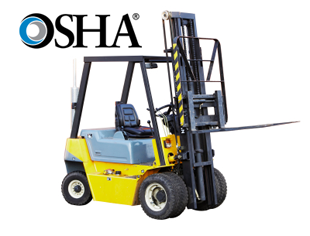OSHA Revises Hazard Communication Standard (TRN Safety Alert)
March 30, 2012 Leave a comment
 From Cliff Gerbick, ASP (The Reserves Network Director of Safety)
From Cliff Gerbick, ASP (The Reserves Network Director of Safety)
The Occupational Safety and Health Administration (OSHA) has revised its Hazard Communication Standard (29 CFR 1910.1200) to align it with the United Nations global chemical labeling system. In a process that began decades ago, OSHA has at last published the final rule that will update the current standard to mirror the Globally Harmonized System of Classification and Labeling of Chemicals (GHS).
The updates to the standard will provide chemical manufacturers a proscribed format for identifying the hazards associated with chemicals. Currently, OSHA requires all employers to maintain Material Safety Data Sheets (MSDS) for all hazardous chemicals in the workplace.
While this requirement will not change, the format in which MSDS are organized will be standardized and must contain the information in the following order:
Section 1. Identification
Section 2. Hazard(s) identification
Section 3. Composition/information on ingredients
Section 4. First-Aid measures
Section 5. Fire-fighting measures
Section 6. Accidental release measures
Section 7. Handling and storage
Section 8. Exposure controls/personal protection
Section 9. Physical and chemical properties
Section 10. Stability and reactivity
Section 11. Toxicological information
Section 12. Ecological information
Section 13. Disposal considerations
Section 14. Transport information
Section 15. Regulatory information
Section 16. Other information, including date of preparation or last revision
In addition, OSHA is phasing out the use of MSDS and will now use the term Safety Data Sheet (SDS).
The other big change to the current standard is the standardized use of pictograms to identify the hazards associated with chemicals. There are nine pictograms used in the GHS and OSHA will adopt eight of them. The ninth pictogram is in regards to environmental effects and since OSHA does not have jurisdiction overall environmental issues, it will not be used. The pictograms are:
HCS Pictograms and Hazards
|
Health Hazard |
Flame |
Exclamation Mark |
| • Carcinogen • Mutagenicity • Reproductive Toxicity • Respiratory Sensitizer • Target Organ Toxicity • Aspiration Toxicity |
• Flammables • Pyrophorics • Self-Heating • Emits Flammable Gas • Self-Reactives • Organic Peroxides |
• Irritant (skin and eye) • Skin Sensitizer • Acute Toxicity (harmful) • Narcotic Effects • Respiratory Tract Irritant • Hazardous to Ozone Layer (Non Mandatory) |
|
Gas Cylinder |
Corrosion |
Exploding Bomb |
| • Gases under Pressure | • Skin Corrosion/ burns • Eye Damage • Corrosive to Metals |
• Explosives • Self-Reactives • Organic Peroxides |
|
Flame over Circle |
Environment |
Skull and Crossbones |
| • Oxidizers | • Aquatic Toxicity | • Acute Toxicity (fatal or toxic) |
OSHA has developed a timeline for all employers to be in compliance with the standard, culminating in 2016. The first deadline in the timeline, December 1, 2013, requires employers to train all employees on the new label elements (pictograms) and SDS format.
Other deadlines are as follows:
|
Effective Completion Date |
Requirement(s) |
Who |
| December 1, 2013 | Train employees on the new label elements and safety data sheet (SDS) format. | Employers |
| June 1, 2015
December 1, 2015 |
Compliance with all modified provisions of this final rule, except: The Distributor shall not ship containers labeled by the chemical manufacturer or importer unless it is a GHS label. |
Chemical manufacturers, importers, distributors and employers |
| June 1, 2016 | Update alternative workplace labeling and hazard communication program as necessary, and provide additional employee training for newly identified physical or health hazards. | Employers |
| Transition period to the Effective Completion Dates noted above. | May comply with either 29 CFR 1910.1200 (the final standard), or the current standard, or both. | Chemical manufacturers, importers, distributors and employers |
OSHA estimates the revised standard will prevent an estimated 585 injuries and illnesses annually. It will reduce trade barriers and result in estimated annualized benefits in productivity improvements for American businesses that regularly handle, store and use hazardous chemicals, as well as cost savings of $32.2 million for American businesses that periodically update safety data sheets and labels for chemicals covered under the standard.
 Cliff Gerbick is the Director of Safety for The Reserves Network, a provider of “Total Staffing Solutions” in the office, industrial, professional and technical markets. To contact Cliff, email cgerbick@trnstaffing.com.
Cliff Gerbick is the Director of Safety for The Reserves Network, a provider of “Total Staffing Solutions” in the office, industrial, professional and technical markets. To contact Cliff, email cgerbick@trnstaffing.com.













